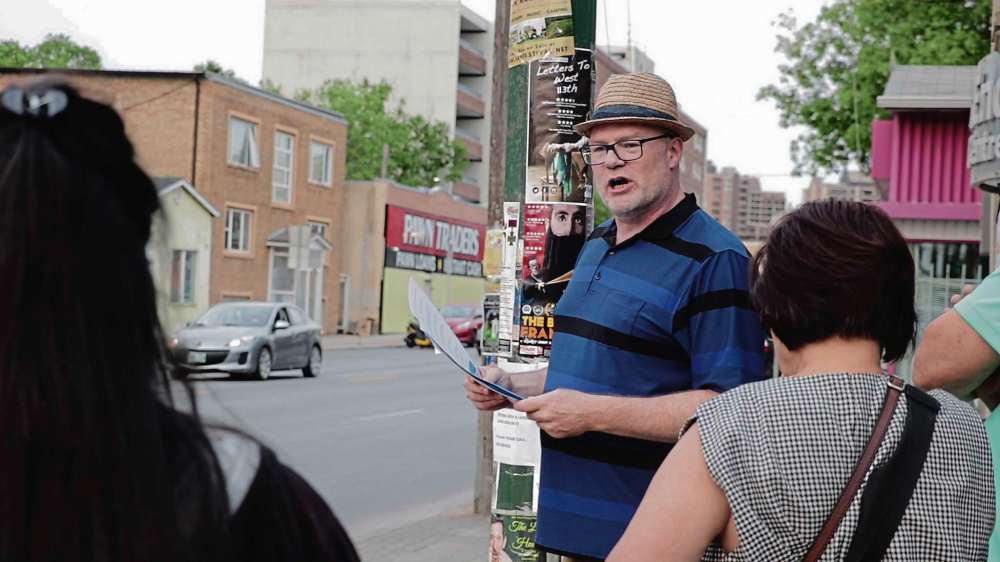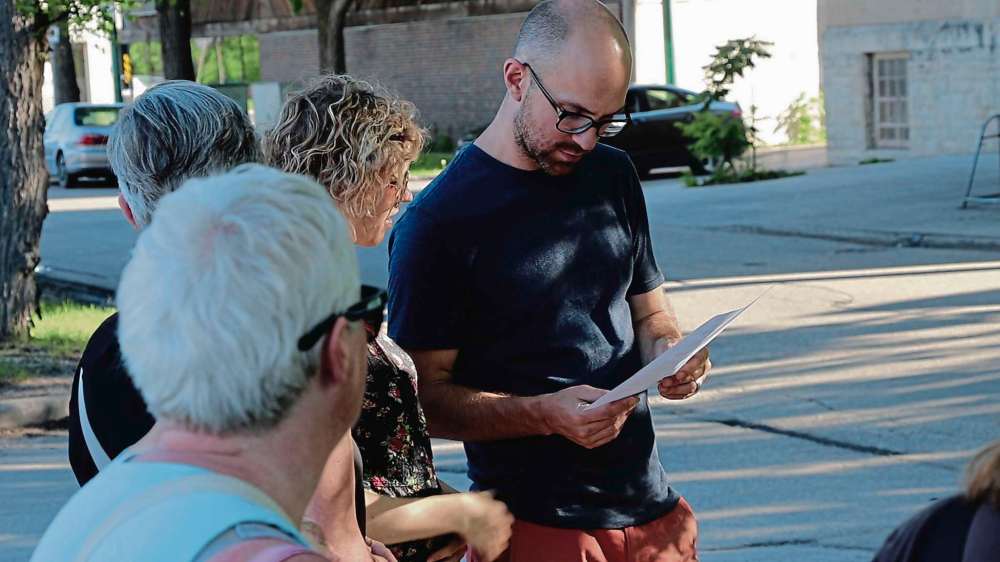Taking a walk back in time
West End tours highlight history
Advertisement
Hey there, time traveller!
This article was published 21/08/2017 (3026 days ago), so information in it may no longer be current.
Compared to other parts of Winnipeg, Wellington Avenue is a relatively young area that began in 1905.
However, as Christian Cassidy will tell you, it has accumulated plenty of its own history in more than 100 years. Cassidy works in housing for the Daniel McIntyre St. Matthews Community Association, and for the second year in a row, he is also leading the way on their historical West End walking tours.
“It’s a side gig and a hobby, the history stuff, but in the summer, we’re looking for extra programming and especially things outside we can do for folks with the short summers we have,” Cassidy said.

“It’s about learning more about your neighbourhood and the street you live on. It’s also a housing issue; the better people know their neighbourhood, the nicer it is.”
The tours began last year and saw about half a dozen folks come out to each. This year, the crowds are larger and mostly from the community, which Cassidy likes to see. Each week takes the group somewhere new. On Aug. 24, Cassidy is leading folks through the Wellington Avenue area.
“A lot of people walk to the tour,” he said. “It’s great to see people who live in the neighbourhood come out to learn more and meet their neighbours.”
Cassidy says that on Aug. 24, they will be taking a walk that more or less follows the chronological route of when things were developed, starting out closer to the University of Winnipeg and moving towards Polo Park.
“1905 is when most of the West End was subdivided by the City with proper roads,” Cassidy said. “There were houses before that but starting around that time is when they started laying out streets and boulevards and laying pipes, so that’s when urban development took off.”
The tour will roughly span 1906 to 1915. It begins close to what used to be the city’s west boundary at Maryland Street, at Jacob Penner Park, or Notre Dame Park, as it was known then. It was originally purchased by the City as one of eight plots that were to become public park spaces.
“Some of our famous parks now that we take for granted, at one point, someone had to go out and get their cheque book and buy them,” Cassidy said. “That’s the oldest site (on the tour) and that’s where the City set up its first greenhouses and nursery.

“The elm trees we have, that’s where they were chosen. The City’s first gardener, his task was to figure out what flowers grew in the area, because people wanted flowers from the old country, they didn’t want local. That was one of his jobs was to have these experimental gardens.”
Cassidy said he tries to include social history in addition to years and dates, to try and paint a picture of the community and the people who helped create it.
The tours are free and run for approximately one and a half hours. On Aug. 24, the group will depart from the southwest corner of Jacob Penner Park at 6:30 p.m.




